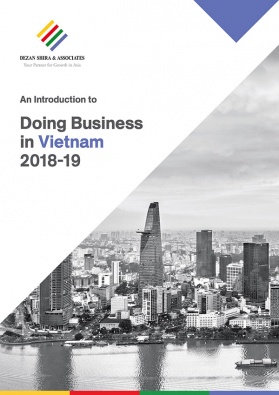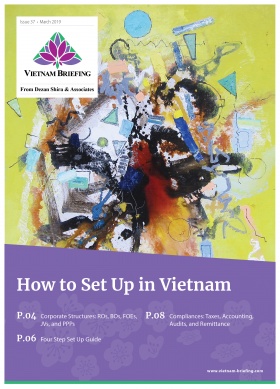Vietnam Records High Female Employment But Challenges Remain
- Vietnam ranks high globally in terms of its female labor participation rate, but more will be required to bring equal access job opportunities to women.
- Challenges faced by Vietnamese women include societal and cultural notions of women being homemakers.
- Government policy reforms and the public sector can take practical action to develop favorable policies and regulations to create equal opportunities for women.
Vietnam has consistently outperformed ASEAN countries, as well as Western ones, with its female labor participation rate, as reported by the Asian Development Bank (ADB) and the Organization for Economic Co-operation and Development (OECD).
Around 79 percent of women aged between 15 and 64 are either engaged in paid work or are looking for jobs in Vietnam compared to 85 percent of men. This figure is higher than all members of the OECD, excluding Iceland, Sweden, and Switzerland. Female laborers account for 48.4 percent of the country’s workforce and create 40 percent of the nation’s wealth.
As Vietnam’s economy continues to grow, the trend has not declined with women continuing to participate in the country’s workforce. International experience shows that gender equality is a win-win for development and businesses. Vietnam’s strong economic growth can attest to this as GDP growth reach a high of 7.1 percent in 2018.
Current Trends
While the female participation rate in Vietnam is impressive, there is visible gender disparity regarding overall labor force participation within different industries. It is more common for men to take up managerial and supervisory jobs in formal sectors such as IT, engineering, architecture, and politics. Despite the legal prohibitions on indication of gender preference in recruitment advertisements, companies still engage in unfair hiring practices. Even within the government, parliamentarian and ministerial roles are typically filled by men.
Nevertheless, Vietnamese women are entrepreneurial: women make up 55 percent of the self-employed labor force in the country. The ratio of female to male new business owners is 1.14 to 1. While this is common in the informal sector, Vietnam is also ranked second for the most number of women in senior management positions among Asian countries, according to a study by accounting firm Grant Thornton.
Several well-known businesses are run by women, including Mai Kieu Lien, who is General Director of Vinamilk with a market capitalization of US$30 billion and Nguyen Thi Phuong Thao, who is President and CEO of Vietjet Air, the second biggest airline in Vietnam.
As Vietnam’s economy shifts from farming to manufacturing, women are often able to find employment opportunities within key export sectors such as textile, footwear and seafood processing. Nevertheless, poor hygienic conditions in these industries are causing health issues; for example, 68 percent of female workers in footwear factories in Vietnam have gynecological infections.
In some regions, like the Mekong Delta, women have started to earn more than men. Authorities report that there is a better balance of power between wives and husbands, citing figures that show domestic violence has fallen and divorce rates have increased.
Equal opportunity issues faced by women
Career advancement
According to a study conducted by the International Labour Organization (ILO) for highly professional or technical jobs, men are often the preferred hires. In technical fields, it’s challenging for women to gain professorships even at universities that employ women faculties.
This goes especially for jobs that require travelling, such as architects and drivers; almost all job ads reviewed required candidates to be men with engineers at 99 percent, and IT professionals at 97 percent. Women are typically hired and expected to perform office and clerical jobs like receptionists, secretaries and accountants, according to the ILO.
Gender pay gap
Vietnamese women face a significant gender pay gap. Last year, a report by M.net, a network for migrant workers set up by Oxfam, revealed that women are paid around 11 percent lower than men for similar work. The gap is even bigger in jobs requiring higher levels of education.
In 2016, the difference in income between male and female untrained workers was 8.1 percent, while for graduate degree holders, it was 19.7. The income of women in managerial positions was about 12 percent lower than their male counterparts.
Women now account for 85 percent of all consumer purchases, including 66 percent of computers and 65 percent for cars. With women accounting for a large consumer base, it makes sense to employ women in the product development process allowing companies to understand and cater to this large customer group.
Scope for improvement
Gender-balanced working environment tends to benefit not only employees, but also employers, state authorities, and society in general.
In recent years, the Vietnamese government has made reforms to drive progress towards better recruitment and working environment for women. For example, in terms of healthcare, female workers are entitled to breaks and day-offs according to their circumstances. For mothers with children under 12 months, they are entitled to 60 minutes break each day during work hours for breastfeeding and rest.
Pregnant female workers also have the right to unilaterally terminate or temporarily suspend their working contracts if required by their health conditions.
Despite some improvements, Vietnamese women still have a number of hurdles to overcome in order to get equal access to job opportunities and career advancements. Gender stereotypes and biases often affect government policy reforms and are related to traditional female roles as homemakers and mothers. On the other hand, more efforts need to be made to encourage employing women in different sectors.
According to research conducted through the Mekong Business Initiative, many Vietnamese women who lead their own businesses have limited access to credit and have fewer opportunities in networking. Advisory and training services provided by the government can help female business owners.
Reforms addressing gender equality have been slow in recent years, though some improvements have been made.
In 2013, maternity leave was increased to six months, among the longest in Asia. In October 2015, the government passed incentives reducing tax for employees hiring female workers. This year, the government passed another Circular No 06/2019/TT/BKHDT, providing 100 percent subsidy for expenses for training in entrepreneurship, business administration, and advanced business administration for women at women-owned SMEs.
Yet, bias and societal norms are still helping to reinforce the gender stereotypes that women typically face as barriers to their career advancements. While recent efforts should be applauded, the government will need to continue to pass reforms allowing for a level playing job market.
Vietnam continues to remain an attractive destination for investment and the inclusion of women will further help it propel into a leading economy.
About Us
Vietnam Briefing is produced by Dezan Shira & Associates. The firm assists foreign investors throughout Asia from offices across the world, including in Hanoi and Ho Chi Minh City. Readers may write to vietnam@dezshira.com for more support on doing business in Vietnam.
- Previous Article Under Vietnam-EAEU Free Trade Deal, Russian Trucks to be Produced in Vietnam
- Next Article Vietnam Ranked 70th for Ease of Doing Business: World Bank






























